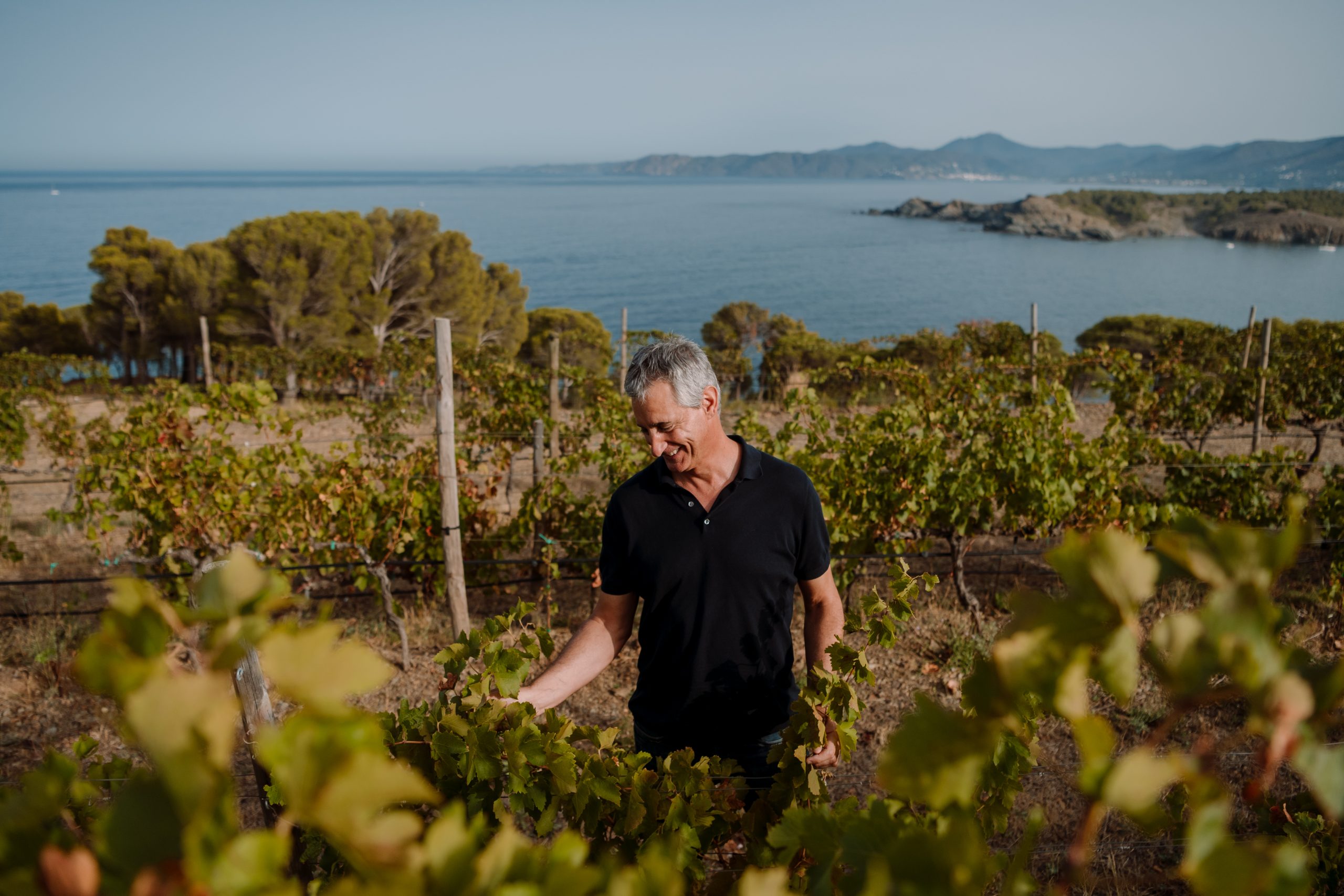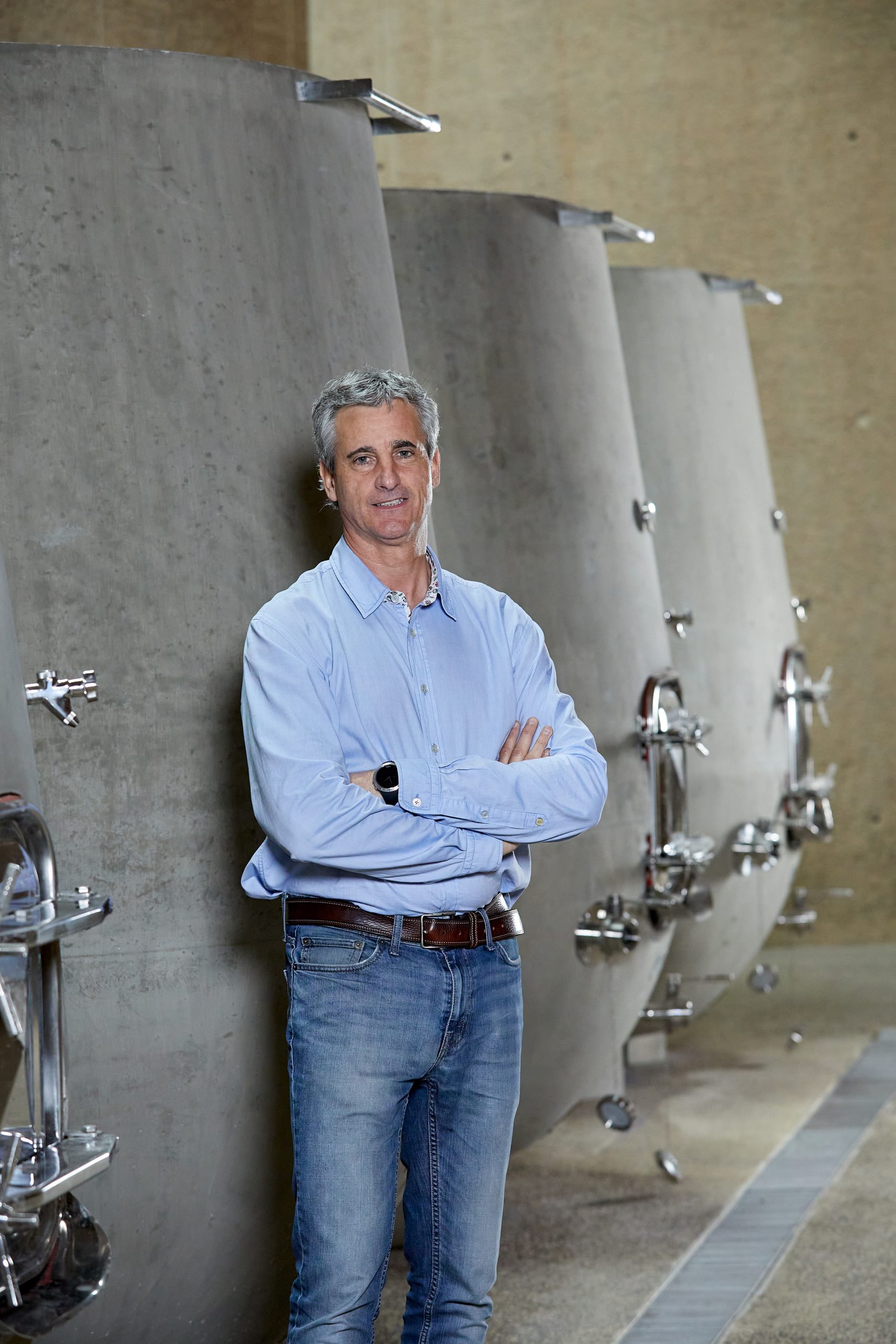Perelada’s winery offers blueprint for sustainable development
By Michael HubandHow can you make your investment fit for the future when redeveloping facilities? Perelada, in its winery in northeast Spain, has the answers.

The planning for this large-scale investment began more than 20 years ago,” says Delfí Sanahuja, chief oenologist at Perelada winery, “when the family first conceived the idea of building a new winery in Perelada. The vision was to create a project that not only honoured the region’s rich winemaking tradition, but also looked to the future with ambition.”
It was a substantial brief and a substantial undertaking. The timing, however, merited it. Founded in 1923, the winery, nearing its 100th year of producing wines in DO Empordà, decided to invest in a new winery, as part of its commitment to innovation and excellence. Its illustrious history includes serving wines to Salvador Dalí and US presidents, so the investment in a state-of-the-art winery was fitting to uphold its legacy for the next century.
And yet, embarking on such a project is not for the faint-hearted. It provoked several questions. How could it improve winemaking? How could Perelada respect the terroirs in this northeastern pocket of Spain? Perhaps most importantly, how could it safeguard the winery’s future?
Laying the foundations
With any large-scale project, intention and direction are essential from the very beginning. So, in Perelada’s case, the first stages involved asking what the team wanted from a new facility.
That began, Sanahuja recounts, with a central objective from the Suqué Mateu family that founded and still owns the winery. “The family was determined to elevate this appellation on the international stage by creating a distinctive project with the ideal conditions to produce exceptional wines,” he says. For his part, the objective was “to give back to the land that has generously supported us and to create a lasting legacy for future generations.”
Rather than following certain stereotypes associated with wineries, which are sometimes described as imposing or futuristic, he chose to prioritise functionality in the design of the winery, considering this approach as one of the fundamental “pillars” upon which the project would be built. That functionality – “guaranteeing an architecture that integrates seamlessly with the entire winemaking process” – would mean that wine, not prestige, would be the winery’s focus. Alongside that functionality, he lists sustainability, oenotourism and harmony (both environmental and aesthetic) within the landscape as core considerations.

It then became a question of who would help realise that vision. The family settled on RCR Arquitectes, winners of the 2017 Pritzker Prize (often termed the Nobel Prize of architecture). “What impressed the family was the purity of their architecture,” he says, “which deeply respects the existing landscape and emphasises the emotional and experiential aspects of the space.”
Indeed, Sanahuja himself has felt the emotional pull that the building exerts. He highlights two areas – the research-focused Ex.Ex. (Exceptional Experience) winery, and the Temple – that have greatly impressed him. The first, he feels, fosters creativity and learning. The second, where the most special wines age, has a potent effect on him. “With its concrete tanks, foudres and barrels, the Temple creates a very mystical atmosphere that invites reflection,” Sanahuja explains.
Built to last
Certain criteria – solidity, functionality, resilience – would be required of any new building. Perelada, however, has taken particular care to future-proof its facilities. The extent to which it faces new demands, whether concerning the environment, winemaking or its business model, is a source of pride for the team.
What, for Sanahuja, has been the most fundamental change? “Becoming the first European winery to achieve LEED® Gold certification,” he answers. “It has fundamentally redefined how we integrate sustainability into every aspect of our production process, placing us at the forefront of this field.”
The certification, recognising green credentials in design, is seen across the facilities. The new Perelada winery employs geothermal energy and natural light, now using 100% certified renewable energy, and emphasises reusing materials. In recognition of the impressive work, Perelada recently won the Renewable Energy Implementation Award at the drinks business Green Awards.
Its water management scheme is also impressive, using efficient equipment and a rain harvesting system with a 700m³ tank. “Overall, the project has achieved a 75.75% reduction in potable water,” Sanahuja says.
The building’s sustainable design mirrors existing work carried out in Perelada’s vineyards. Of its five estates, three already have organic certification, and the other two will achieve certification next year. The approach to water management is more high-tech. It makes use of highly efficient pipes 30cm below ground that deliver water directly to the roots of the vines, while satellite data informs when to irrigate for optimum effect.
Not only has the sustainability push reduced Perelada’s environmental footprint, it has also created a more attractive wine tourism destination. While you might expect Perelada’s associated resort, complete with golf course, spa and Michelin-starred restaurant, to bring the tourists, the sustainable winery is also a draw. “The growing interest and commitment of people to sustainable practices and environmental respect are crucial factors in attracting visitors,” Sanahuja explains.
Yet it is not solely in matters of sustainability that Perelada is future-proofing itself. The state-of-the-art winery is able to vinify small plots separately. Perelada can thus highlight individual terroirs in a less-known appellation with fewer than 1,800 hectares of vineyards. For the Suqué Mateu family’s goal to elevate Empordà’s reputation, that may well prove essential.
No-one can tell how the next 100 years will treat Perelada, or indeed Empordà. Sanahuja and his team, however, believe that they have laid foundations, literal and metaphorical, for a secure and sustainable future.
Making strides towards that future is his final piece of advice for those inspired by Perelada’s project.
“I would recommend that any producer beginning a sustainability journey dedicates time and effort to this process,” Sanahuja explains. “We cannot ignore that all aspects of production can be improved from a sustainable perspective. In the end, it is a matter of collective awareness, but each person must contribute their own part, understanding that what we do today impacts tomorrow.”
Related news
Freixenet celebrates Mother's Day with multi-channel activations
Why the wine rarely vanishes – the truth about cooking with alcohol
